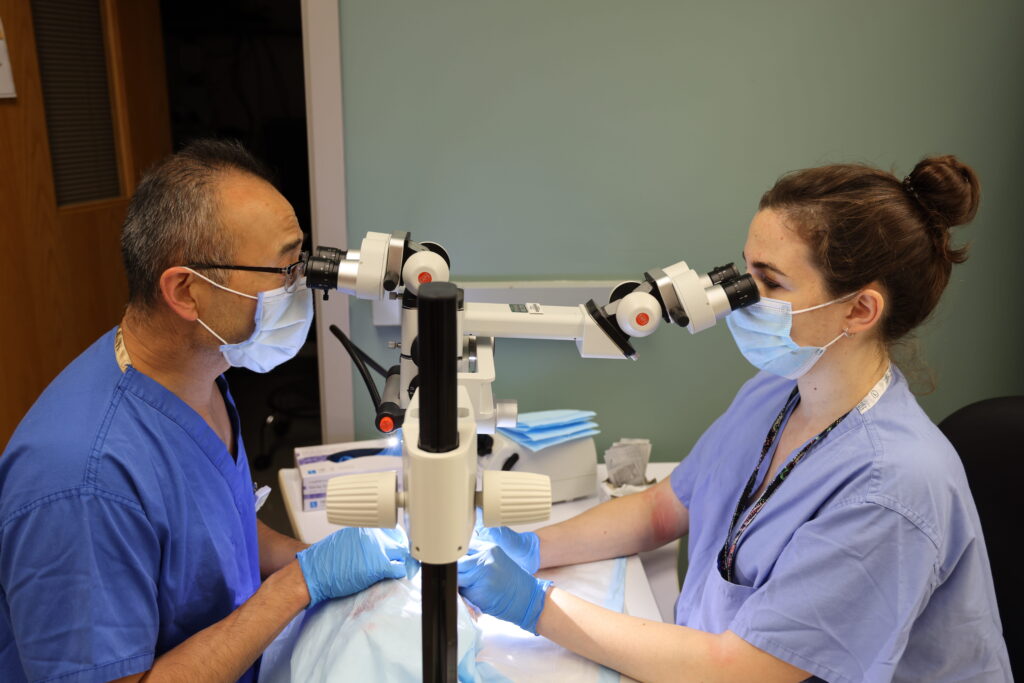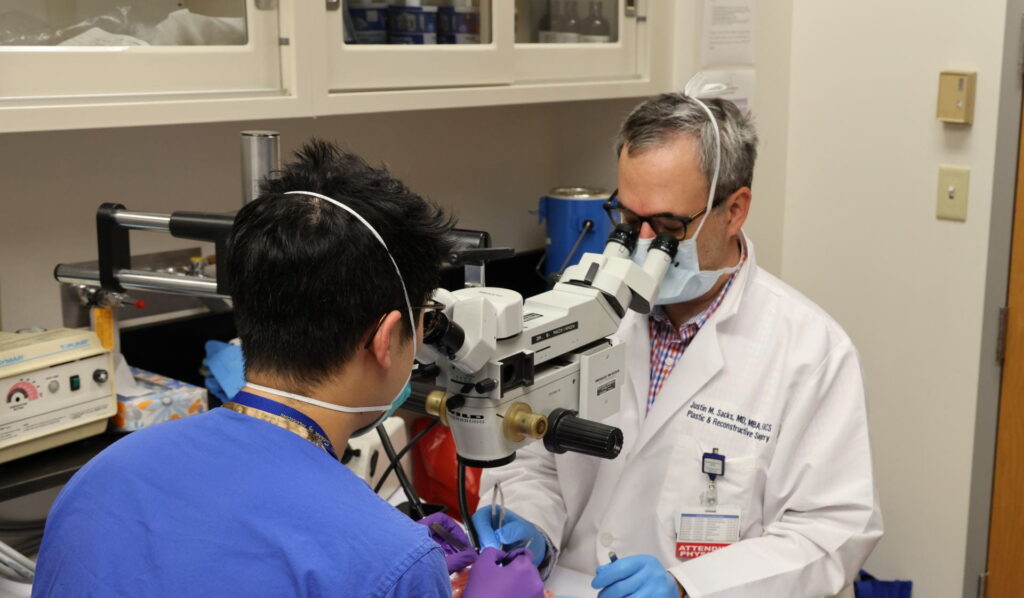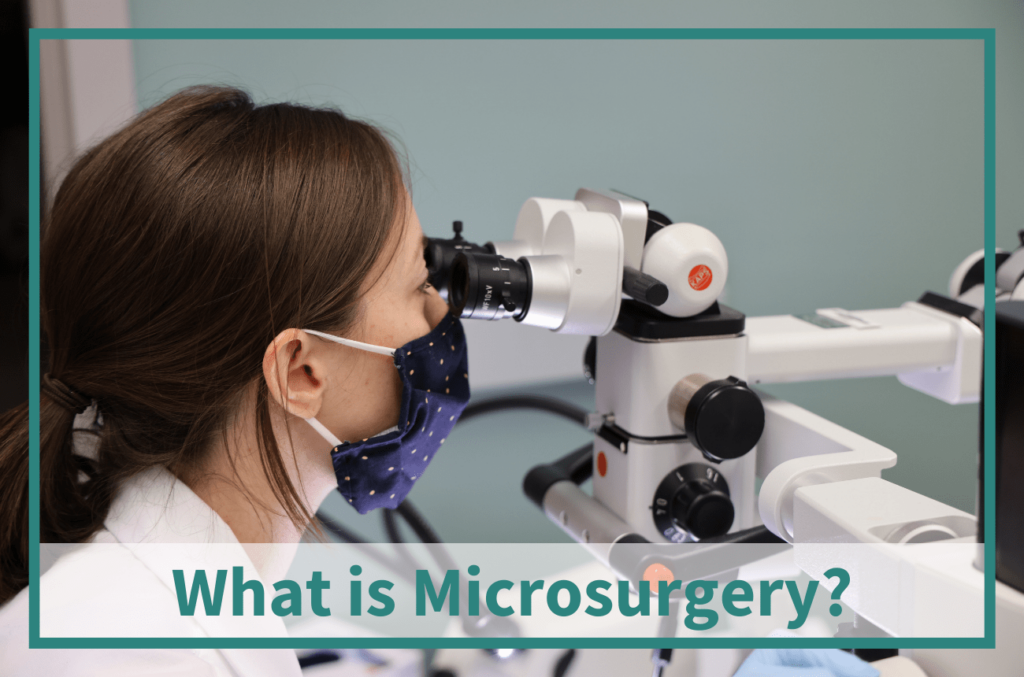Microsurgery is exactly what it sounds like: surgery performed under a microscope. It is a tool used by many plastic surgeons to perform specific procedures, including transfer of tissue from one part of the body to another, reattachment of severed parts and composite tissue transplantation. Washington University plastic and reconstructive surgeons, who offer advanced microsurgical techniques, answer frequently asked questions about this field of surgery.
What is microsurgery?
Microsurgery is the specialized surgical technique of observing through a compound microscope when operating with special miniaturized instruments. It is an evolving discipline of surgery that deals with the surgery of very small structures such as blood vessels and nerves typically 1 millimeter or less in diameter. A millimeter is about the size of the sharpened tip of a pencil.
What is microsurgery used for?
Microsurgery is used for complex reconstructive operations, including reconstruction of damaged skin, muscles, and tissues. Modern day procedures that utilize microsurgical techniques include nerve repair, nerve grafting, blood vessel repair, vascular grafting and free tissue transfers. Plastic surgeons also use microsurgery for lymphedema and limb preservation efforts. The technique is very helpful in the reattachment or replantation of amputated body parts.
How is microsurgery performed?
In microsurgery, the surgeon observes the body structure they are operating on through a microscope rather than by gazing directly at it. Surgeons use specialized operating microscopes and precision instrumentation when repairing these intricate structures of the body. Some microsurgery is done with high-powered microsurgical loupes that surgeons wear on glasses. Other equipment involved includes a bright light source, forceps and other instruments designed for precision and to counteract the natural tremor in a surgeon’s hand, and specialized thread and needles for suturing and stitching. The operating room is also set with low lighting so that the lighting of the microscope is enhanced. The surgical team also has a video camera that displays a view of what is happening in the operating field.


What are the benefits of microsurgery?
The equipment used in microsurgery helps magnify the operating field and allows precision in movement despite the high magnification. The magnification allows for operation on structures that are otherwise very hard to see because of their microscopic size. Advantages of microsurgery include cleaner and smaller incisions, lesser hemorrhage (bleeding from a damaged blood vessel), minimal tissue handling and a closer wound approximation. These factors can also lead to a less painful postoperative period, faster recovery and a more satisfying outcome. Thanks to microsurgery technology, surgeons have been able to restore form and function to individuals impaired by trauma, cancer and congenital anomalies.
How do you prepare for microsurgery?
Before microsurgery, patients may be asked to get lab testing or a medical evaluation, take certain medications or adjust your current medications, stop smoking, and avoid taking aspirin or anti-inflammatory drugs and herbal supplements as they can increase bleeding.
Prehabilitation (or rehabilitation before surgery) can help patients be healthy and strong before surgery and improve your recovery afterward. The Surgical Prehabilitation and Readiness (SPAR) program can help guide patients and give them strategies and goals to prepare for surgery.
Where is microsurgery performed?
Microsurgery is typically performed in a hospital setting and will likely use general anesthesia.
Who should I see for microsurgery?
Microsurgery is a technically demanding procedure and has a steep learning curve. It is imperative to see a specialist who is an expert in the field. Washington University School of Medicine has three fellowship-trained experts in microsurgery:
Microsurgeons see patients at the Center for Advanced Medicine and Barnes-Jewish West County Hospital. For more information about microsurgery treatment or to make an appointment with Dr. Anolik or Dr. Sacks at the Center for Advanced Medicine or Barnes-Jewish West County Hospital, please call 314-362-7388 or request an appointment online.
